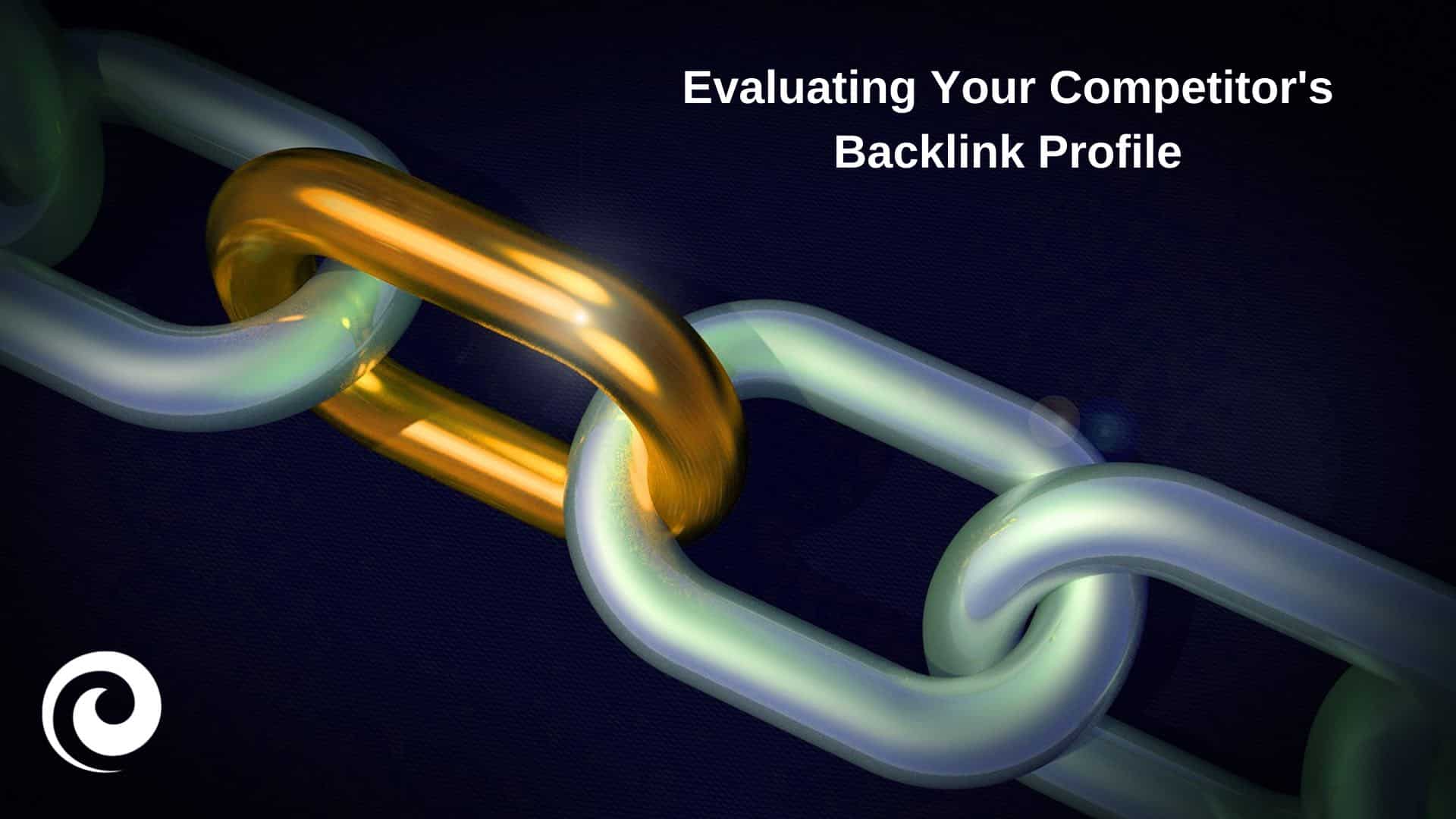

Competitive backlink research is one of the first steps in either building your own link-building strategy or figuring out what it takes to achieve your competitors’ organic rankings.
Links are certainly not the only ranking signal, but they are still one of the most powerful factors (if not the most powerful one).
When selecting your competitors to analyze you will likely choose those that rank particularly well for your target queries, which makes sense because you want to know what has worked for them.
There’s one important thing to keep in mind here: It’s generally best to select your peers (sites directly in your vertical or niche). In other words, stay away from large websites that play within a variety of verticals but happen to rank above you (big box stores, Wikipedia, etc.).
There’s not much you can learn from Amazon’s backlink profile, for example, apart from the fact that being a web giant is working well for them.
Likewise, there’s less to learn from your oldest competitors apart from starting early (and earning all those age and trust signals over time) is certainly a good idea.
Instead, look for sites that have seen a recent growth in rankings to zero in on tactics working well for them. These are the types of sites you can best learn from, and this is what will make your competitive research actionable, i.e. help you build and implement your own strategy.
Once you have 2-4 competitors to analyze, make sure you rule out all the red flags you want to avoid first. In other words, start with what you don’t want to do. Filter those lower-quality and often risky links out to be able to find the best links common amongst the peers within your industry.
Step 1: Filter out red flags
When it comes to link building, too much of any questionable tactic can be detrimental but let’s get a bit more specific. Look for the following red flags:
Exact match anchor text
Are you seeing a lot of backlinks that repeat the same (or almost the same) anchor text over and over again? This is always a sign of poor and outdated link building that may get (or may have gotten) your competitors into trouble.
Very often when you see a backlink profile that is full of obviously SEO-driven links, you may also notice that the site lost visibility at some point: look for dips in organic visibility that may have happened over the years using Semrush or your favorite SEO toolset.
You cannot access their disavow file, so chances are they have gradually revived their rankings by urging Google to discount those low-quality links. But if those links haven’t caused them to lose rankings yet, chances are it will eventually happen.
It doesn’t have to be a manual penalty though: Google may be already discounting those links, so they have zero impact on their organic visibility at this point.
In either case, these are not the types of links you’d want to be after.
Outdated link building tactics
There are still quite a few outdated link-building patterns found in lots of backlink profiles out there.
These include:
- Directory links
- Links from blog networks
- Article directory links
- Content syndication (Press releases or other)
- Low-quality guest posting links
Look out for links from websites that invite one to submit an article or “sponsor content” on them. Keep an eye on thin content that was obviously created for the sake of linking to your competitor. More importantly, try and see obvious patterns behind those backlinks: The same link building tactic appearing over and over throughout a backlink profile.
These links are probably also discounted by Google; none of these link types are worth your effort or investment.
Step 2: Learn from their success
Now that you know what to stay away from focus on what you can learn from your competitor’s backlink profile.
If you choose your competitors wisely based on organic visibility, there will likely be more to learn than to avoid. After all, if those sites rank well, Google obviously likes their backlink profile, or at least they are doing something right.
So, what can you learn from your competitors’ backlink profiles?
1. Your competitors’ content marketing tactics
Which content seems to work for your competitors in terms of link generation? What’s their most linked content? Have they managed to get any of their content assets viral or picked up by notable web publications? Can yours do better?
Obviously, you don’t know what happens behind the scenes of them achieving those links, but it is usually obvious when a particular content asset did extraordinarily well for generating solid backlinks.
It is usually easy to identify content that went viral and generated hundreds of links or a resource page that got cited by highly trusted websites like universities and government organizations.
Can you recreate those types of assets for your website and bring them up to date or make them better?
It is also a good idea to identify your competitor’s high-ranking content. Content that ranks on top of Google tends to bring in links naturally as bloggers and journalists use Google to find sources. Getting your articles to rank is also a link acquisition tactic bringing organic link equity on a continuous basis without you having to actively build those links through traditional outreach.
- Find your competitors’ articles that rank high for searchable keywords.
- Check backlinks of those articles to identify if that works for them.
- Try and claim those rankings by creating much better content.
Keep an eye on higher-level tactics that bring your competitors rankings and links. What type of content is delivering topical links? Oftentimes these would be:
- Glossaries and knowledge bases;
- In-depth how-to content;
- Statistical studies and survey results (these tend to be the most powerful), etc.
2. Your competitors’ outreach tactics
Who are your competitors reaching out to when trying to build links?
It is usually easy to tell by the type of links they are getting:
- Links from news outlets come as a result of journalistic outreach
- Trusted links from educators (college professors, teachers, etc.) require targeted trust-bait content and outreach
- Links from blogs are built through blogger outreach (and often creation of viral assets, like free tools and infographics)
Which of those links seem to dominate your competitors’ backlink profile? Knowing the answer will inspire your own link acquisition strategy and help you make more informed decisions.
3. Your competitors’ influencer marketing tactics
Who are your competitors’ content amplifiers? In other words, who are those people (authors, niche experts, etc.) behind those links your competitors are getting?
Influencer marketing is a great way to generate backlinks on many levels:
- Lots of niche influencers have sites and blogs they can use to link from
- Influencers (if you choose them wisely) can drive organic links by simply sharing your content or mentioning it in their newsletters.
- You may be able to actively engage with influencers within your niche via interviews, podcasts, Q&As, etc.
Sometimes, influencer-based tactics are hard to track in your competitors’ backlink profiles. It is often hard to correlate a sudden surge of backlinks to your competitor’s site without knowing the root cause of the spike.
This is where well-organized social media research and listening can help your competitive backlink analysis. Search Twitter and Instagram for your competitors’ brand names to see who is talking about them and what kind of an audience is involved in listening to those messages. Tools like Keyhole (a social media analytics platform) and Milled (a newsletter archive) can help you distinguish those sources of influence and match them with your competitor’s backlink profile.
Conclusion
Competitive backlink research is often enlightening if you know what to look for.
It is no use in trying to go after each and every one of their good links, though. Instead, take a higher-level approach: What is it they are doing to generate links and how can I do the same but better?
Trying to be as good as your competitor means there’s no reason for Google to rank your site higher. You need to always strive to do better: Better content, better outreach, better promotion tools. There’s often a lot of “heavy lifting” internally to get this right, and many companies choose to hire a better link-building company in order to do it right. Whichever direction you go, staying on top of your competitor’s backlinks (and your own!) will help you earn and maintain top rankings as time goes on.





